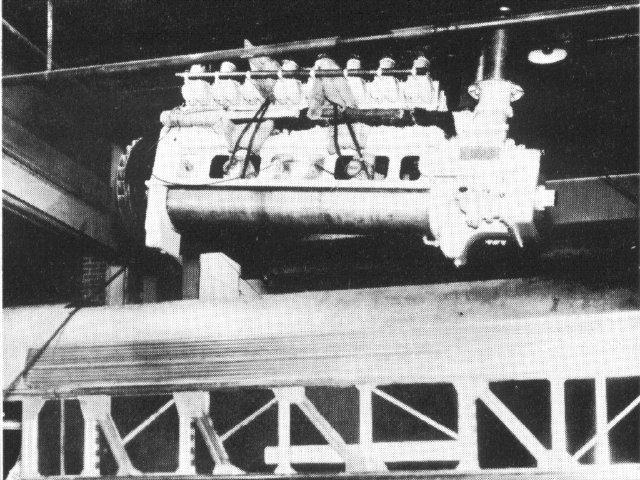"The 201 represented a remarkable
advance in the art of Diesel-engine construction. It had been developed
as a lightweight unit for Navy submarines. It was a two-cycle
eight-cylinder engine, each cylinder developing 75 to 80 horsepower.
The weight was only 20 pounds per horsepower, a highly efficient ratio.
The frame was of welded steel, a radical departure from accepted
practice, but a feature that facilitated mass production. From the
service and repair standpoint, each cylinder and piston assembly was
separately
removable. One of the key innovations was the unit injector, by means
of which solid fuel (unmixed with air) was fed into the cylinder under
thousands of pounds of pressure. The advantage of the unit injector was
that it
eliminated the need for high pressure in long fuel lines. The pressure
was created
by the unit injector - which was also a pump - at the moment the fuel
entered
the cylinder.
201A being lowered
into
Zephyr carbody

|
"Two of these engines had been installed in
the General Motors
exhibit
at the Century of Progress Exposition in Chicago, and these were the
prototypes
considered by Ralph Budd, president of Burlington Lines, for use on his
Pioneer Zephyr." *
* Reck, F.M. (1954). The Dilworth Story.
(p.47). NY:
McGraw Hill.
